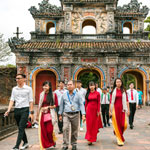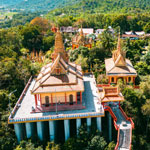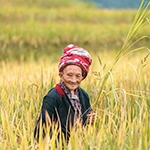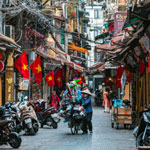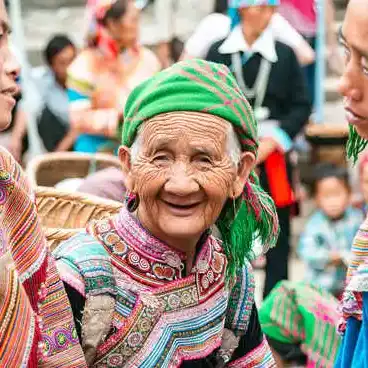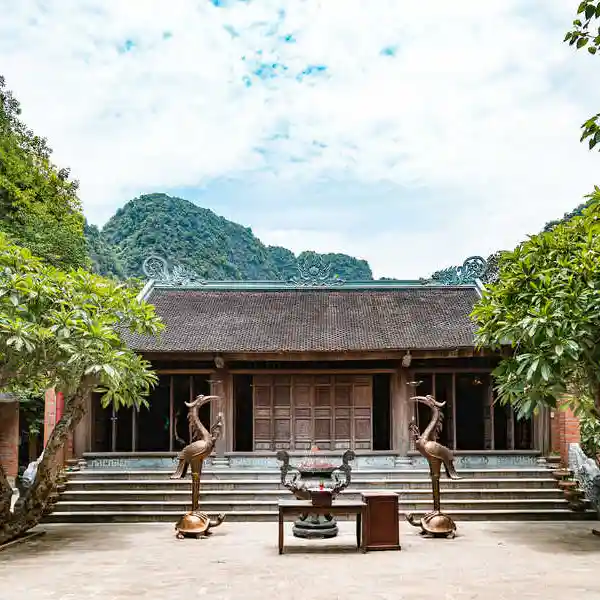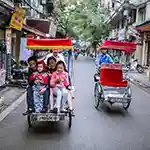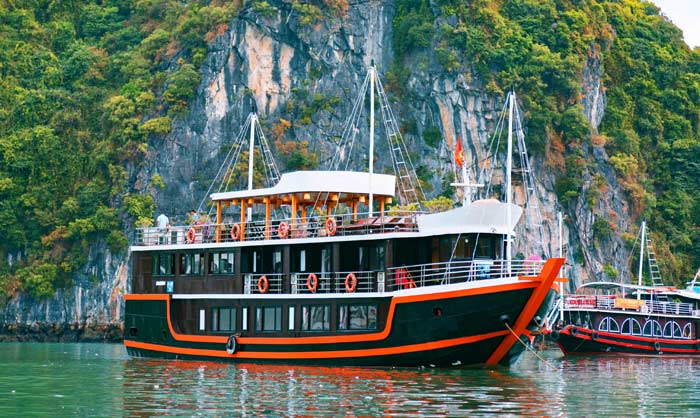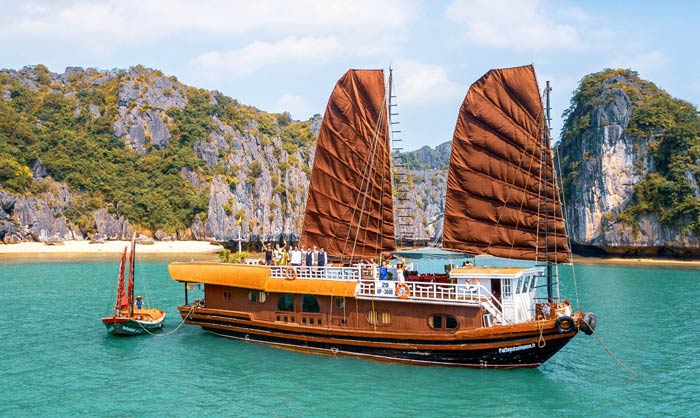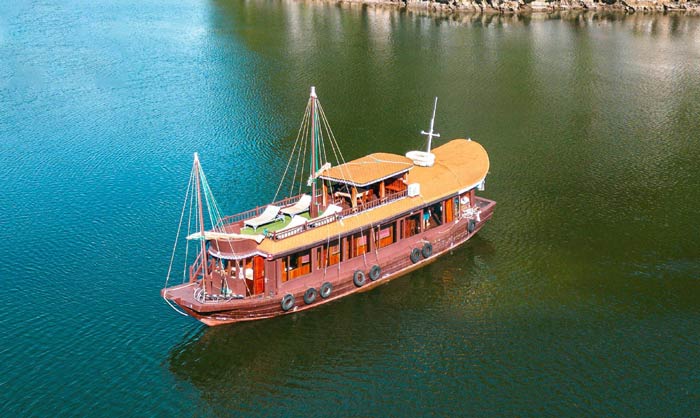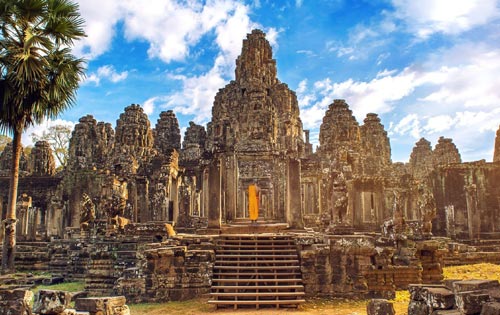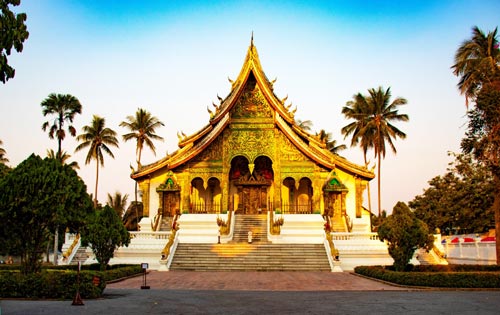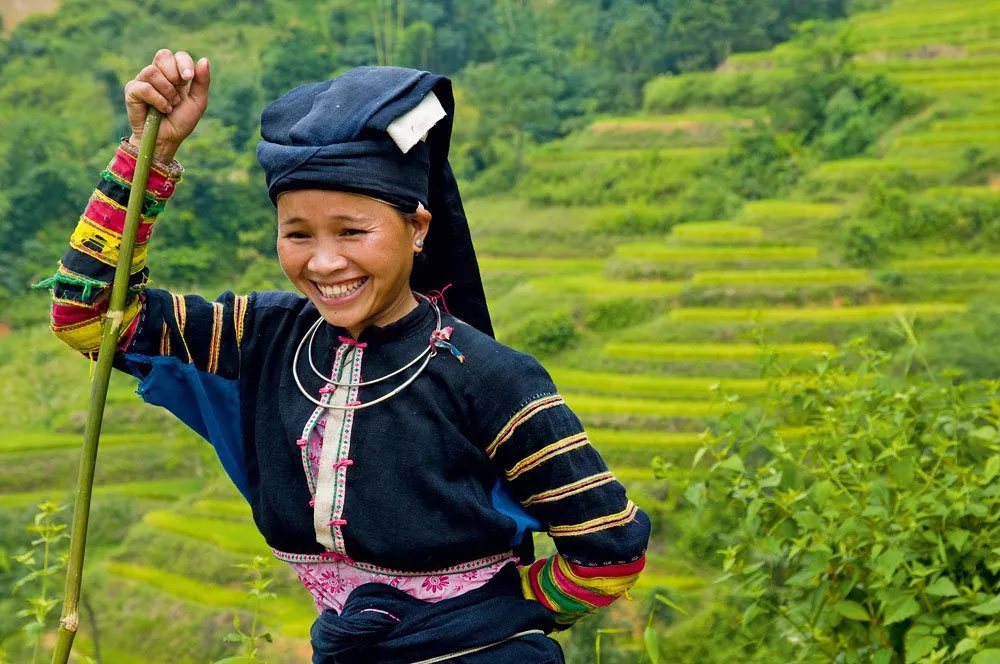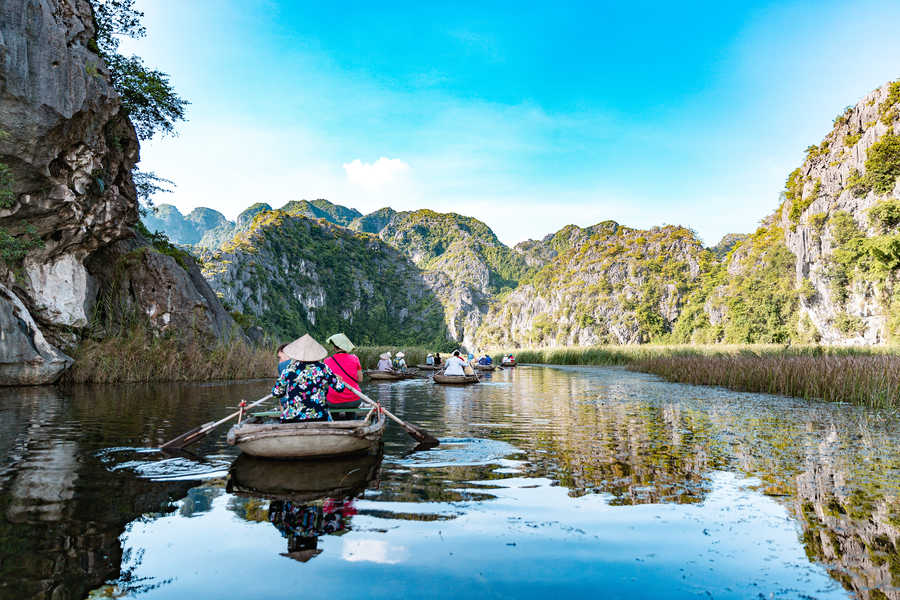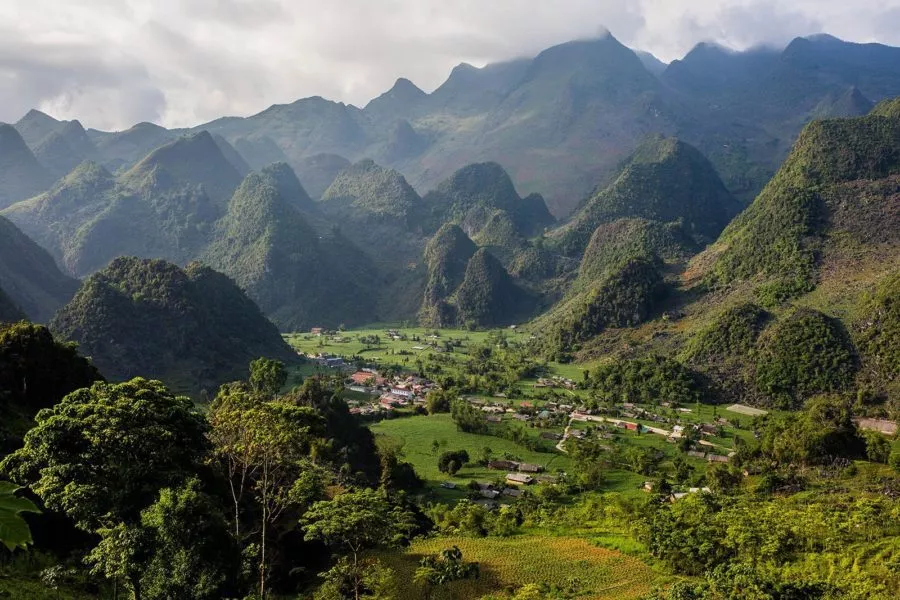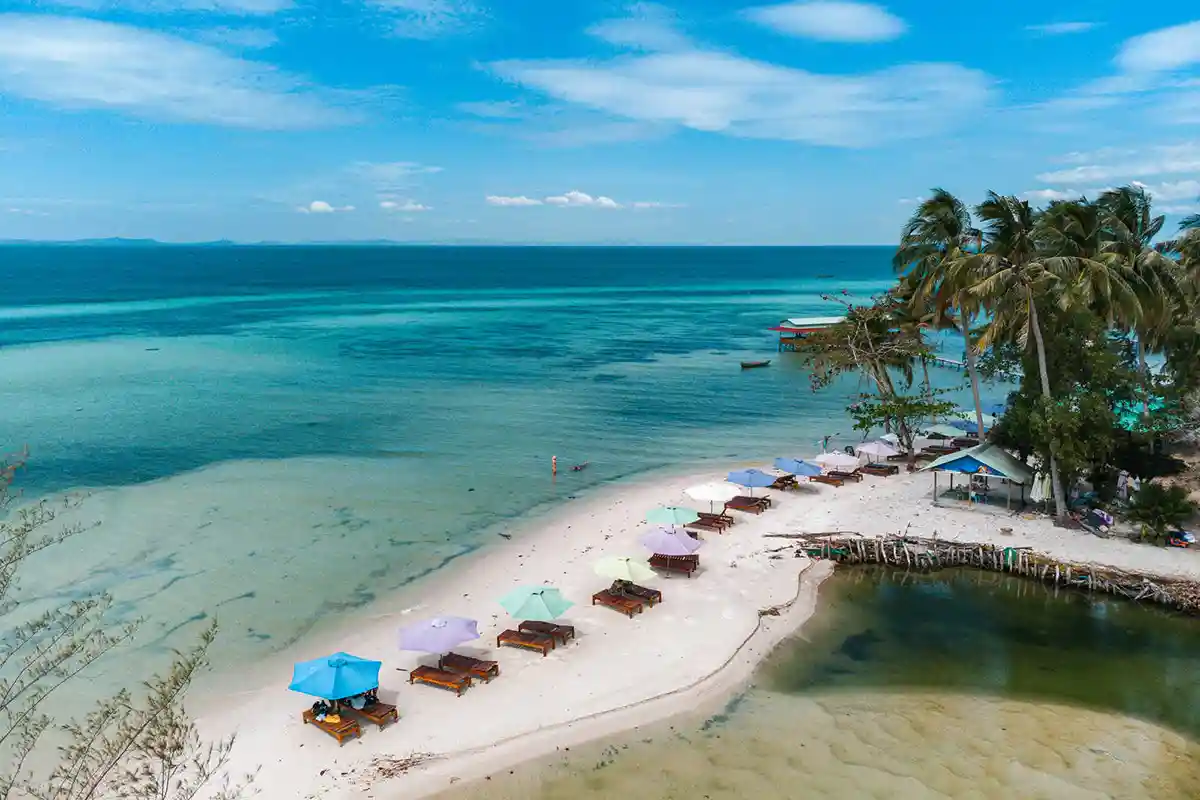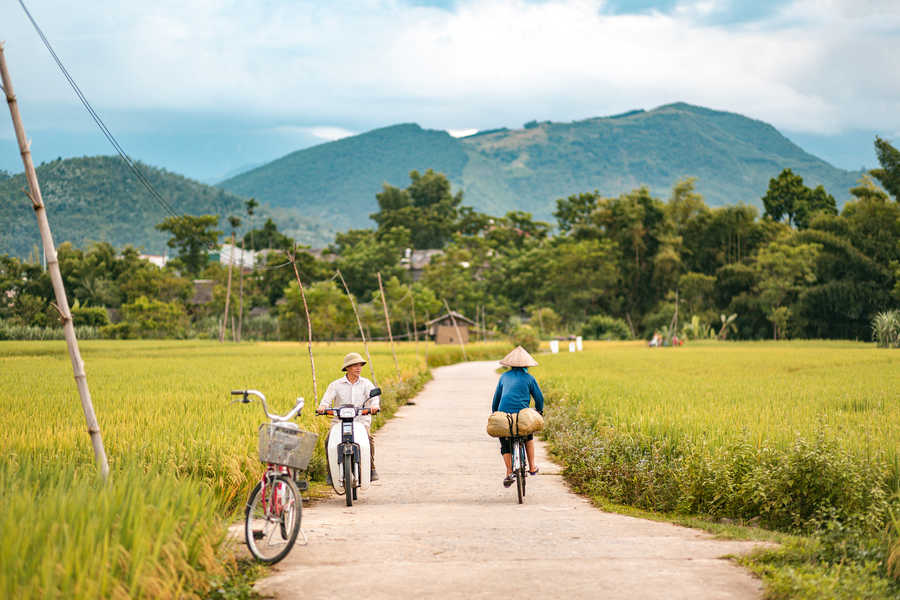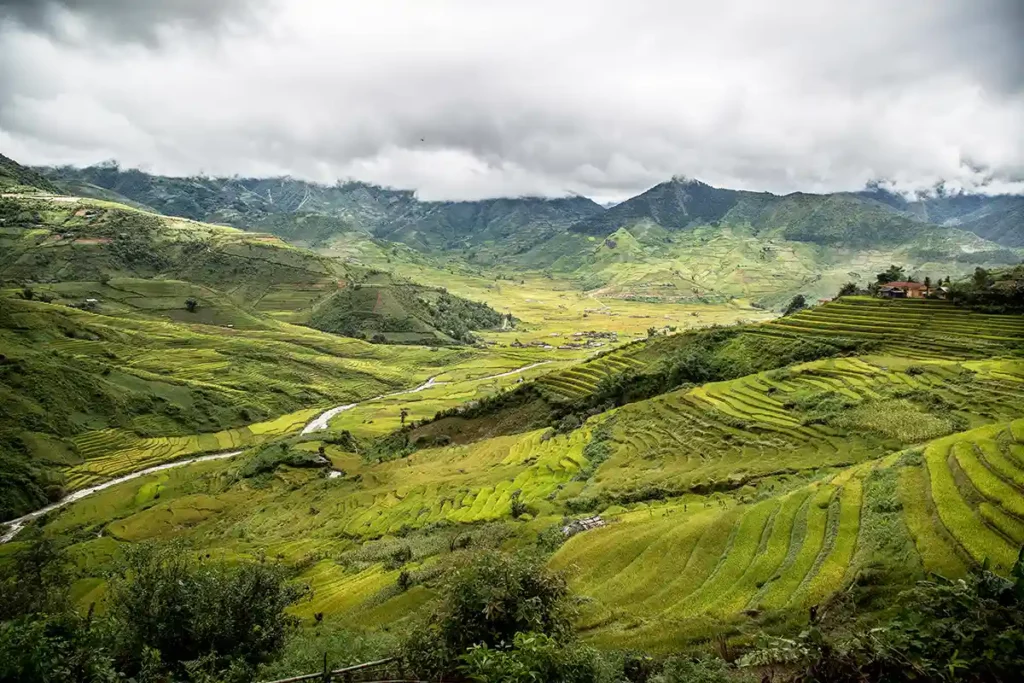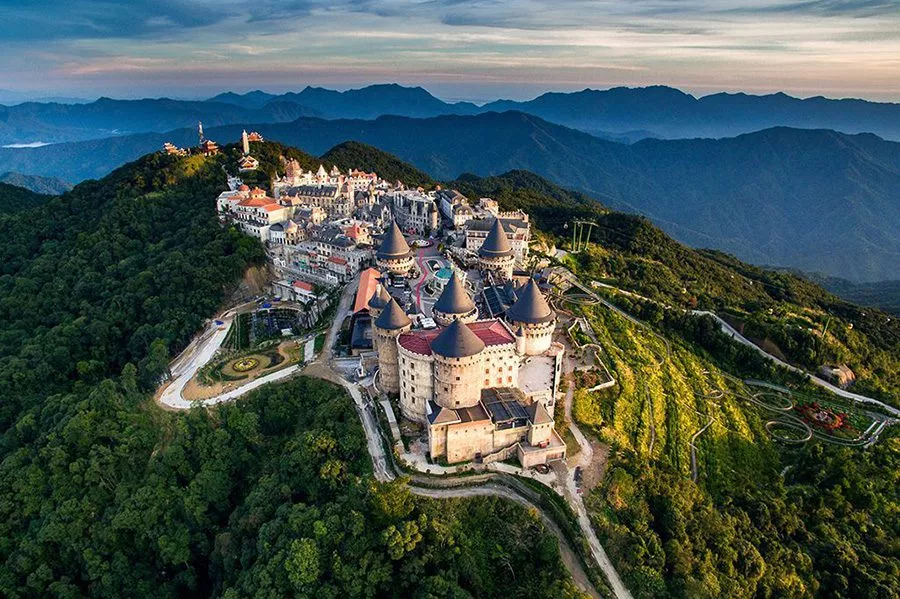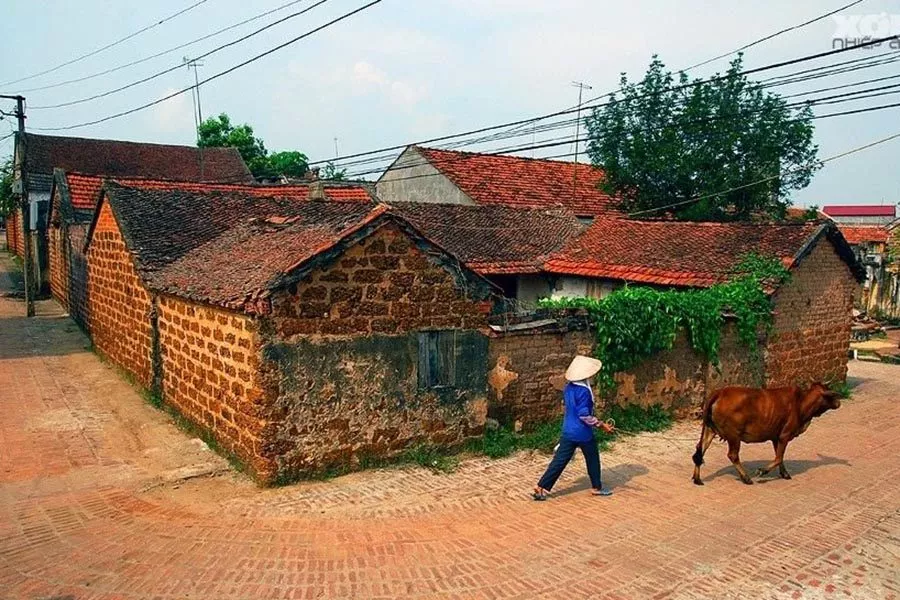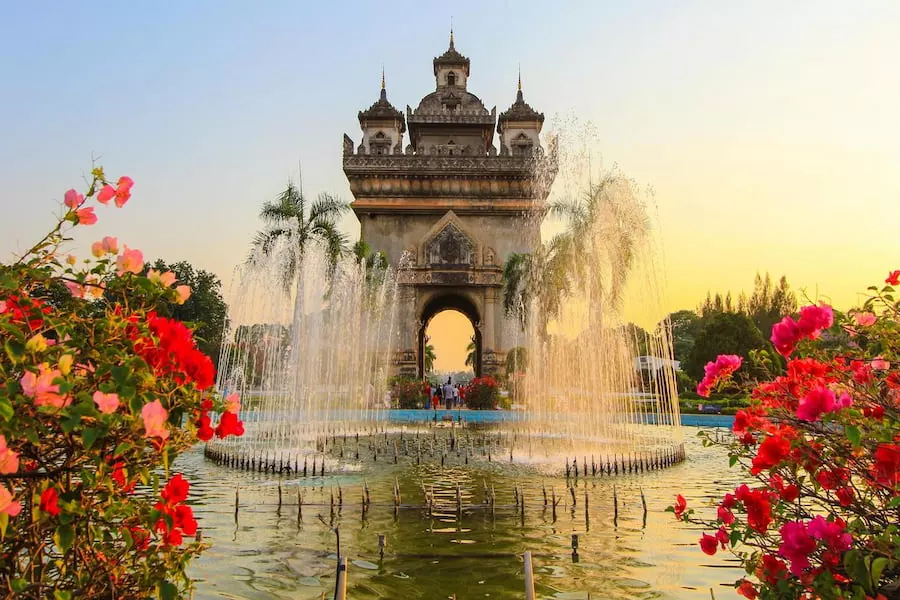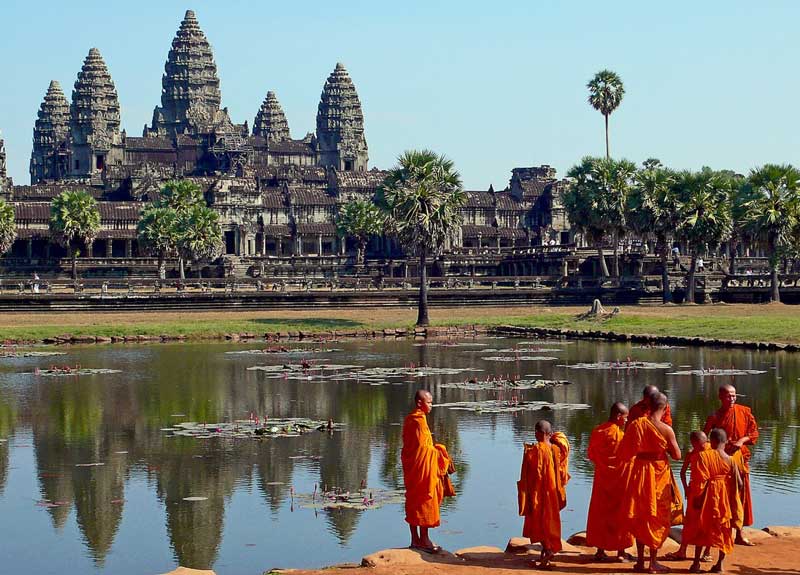The Lolo are an ethnic group originally from western China, a small part of which settled in Tonkin from the 15th century onwards. There are two subgroups in Vietnam: the Flower Lolo, who live in the districts of Meo Vac and Dong Van (Ha Giang Province), and the Black Lolo, who live in the Bao Lac district (Cao Bang Province). Their cultures are very similar, but their traditional clothing differs greatly!
What do the Lolo live on?
There are only about 4,000 Lolo people in Vietnam, and they live in rather remote areas of the country. The people mainly live from rice farming, livestock breeding, vegetable gardening, weaving, and small-scale trading. You can discover beautiful looms and the clothing produced from them! If you visit the Black Lolo in Bao Lac, you will witness their daily life filled with hard work! You can also meet them at the Bao Lac market.
Black Lolo woman wearing her traditional clothes while working in the fields.
How do they live?
Their villages consist of houses made entirely of wood. The ground floor is dedicated to animals, storage, and work tools. There are three rooms: the kitchen, the bedrooms, and the room containing the ancestral altar.
How do they dress?
# The Floral Lolos of Ha Giang: Different textiles and materials are used, such as batik and hand embroidery, but you will also see pompoms and beads. The traditional outfit of Lolo women from Meo Vac consists of several garments: elastic-waist pants, a wrap-around skirt crossing in the front, two decorative belts at the waist, a jacket, and a headscarf.
# The Black Lolos of Cao Bang: The women wear a short black jacket with colorful sleeves (featuring yellow, pink, or green stripes). Their pants are long and loose but slightly cropped for ease of movement. A headscarf is also an essential part of the outfit. As for the men, their attire is much simpler — a black jacket fastened on the side!
Floral Lolo women in their traditional attire. Photo credit: Quang Lam
What are their beliefs?
The Lolos, whether Black or Floral, remain animists and believe in spirits and deities. Did you know they sleep with a candle lit to ward off ghosts? The village chief is responsible for the worship of ancestors and keeps the sacred drums—powerful instruments used to communicate with the world of the dead. These drums resonate through funeral ceremonies for several days!
The rituals
# Marriage: The Lolo marriage ceremony includes several stages. First, the family of the suitor must choose four people—two women and two men—who are responsible for making the proposal to the young woman’s family. They visit the family bringing gifts such as rice wine. If the family accepts, they drink together and set a wedding date. On the wedding day, the groom’s family presents their gifts in the evening to the bride’s uncle, who then passes them on to the eldest member of the family. The bride’s family then prays to the ancestors, followed by a night of celebration. The official wedding ceremony takes place the following morning.
The uncle then leads his niece to her bridal chamber and introduces her to the groom’s family, while the bride’s relatives cry to express their affection for her. The bride also weeps to show her reluctance to leave her parents. The bridesmaids from both families accompany her as she leaves her home. The group then heads to the groom’s house, where the bride is welcomed in the same way the groom was received at her home the day before—with drinking and singing. According to Lolo tradition, when the bride enters the groom’s house, his parents must hide, as their presence is believed to disturb the bride’s spirit and endanger her future health.
Shortly after the celebration begins at the groom’s house, the bride’s uncle arrives with her dowry, which usually includes a pig, a chicken, a hoe, a pan, a knife, wine, meat, rice, and clothing. If the bride’s family is wealthy, he may even bring a cow.
The groom’s family then hosts the wedding celebration: both families sing together throughout the night to wish the newlyweds happiness.
Three days after the wedding, the couple returns to the bride’s home to visit and greet the entire family. They usually stay for a few days before permanently moving to the groom’s family home.
# The funeral
During funerals, the bronze drum is the most important instrument. It is used as a link with the spirits. Animal sacrifices and dances also accompany the ceremonies. The Lolo practice ancestor worship, honoring their parents and relatives. These ancestors are represented on the altar by wooden funerary tablets carved in human shape, with faces drawn using charcoal. The Lolo reserve an important place for “souls” in their spiritual life. In every home, there is an altar dedicated to the ancestors.


